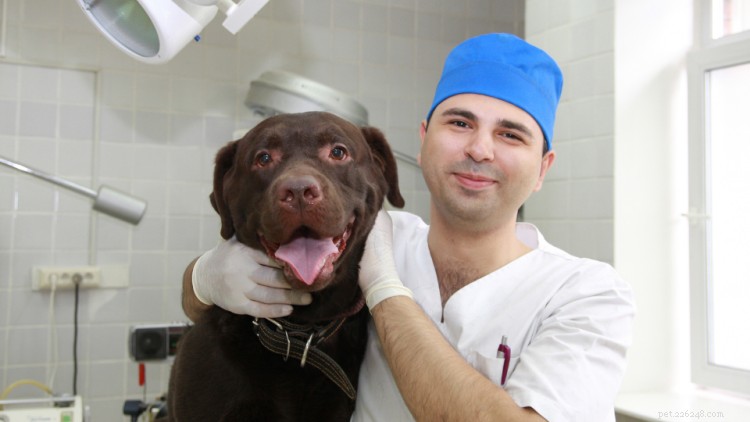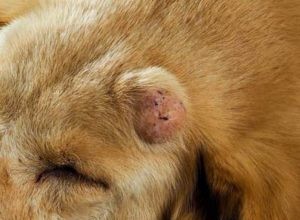
Если вы заметили, что за ночь на шее, груди, ноге или спине вашей собаки появилась шишка, не паникуйте. Многие владельцы домашних животных будут опасаться, что у их собаки рак, но прежде чем переходить к наихудшему сценарию, запланируйте встречу с ветеринаром, чтобы оценить опухоль. Это может быть липома.
Липома – это распространенный тип опухоли, от которой страдают примерно 16 % собак. . Хотя слово «опухоль» может звучать пугающе, важно знать, что эти аномальные новообразования представляют собой доброкачественные жировые отложения и обычно безвредны.
В этой статье мы расскажем все, что вам нужно знать о липомах у собак, стоимости удаления, методах лечения и многом другом.
Оглавление
Совет профессионала: Не уверены, стоит ли показать собаку ветеринару, чтобы проверить опухоль? Со страховкой домашних животных вы можете меньше беспокоиться о стоимости визитов к ветеринару и быть спокойными, зная, что вам возместят наличные расходы, потраченные на покрываемые медицинские расходы.
Липомы, также известные как опухоли жировой ткани, возникают из-за жировых отложений, которые растут с другой скоростью, чем окружающий жир, что приводит к образованию уплотнения под кожей у собак (у людей они тоже есть). Выраженная шишка часто кажется мягкой и подвижной и обычно не прикреплена к расположенной ниже мышце. Опухоль обычно хорошо инкапсулирована, то есть имеет четкие границы, что позволяет при необходимости легко удалить ее хирургическим путем.
Липомы обычно безвредный , но в определенных местах — например, под мышкой или в паху — они могут ограничивать подвижность. Большинство из них доброкачественные, то есть они не являются раковыми и не будут распространяться (или метастазировать) по всему телу, как это могут делать злокачественные опухоли. Однако у некоторых собак на протяжении всей жизни образуются множественные липомы в разных местах на теле.
Существует также более агрессивная форма липомы, называемая инфильтративной липомой. . Этот тип роста по-прежнему является доброкачественным, но имеет менее четкие границы и его труднее удалить хирургическим путем.
Примечание. «Липома» звучит очень похоже на лимфому у собак, но это не то же самое, что относится к очень агрессивной форме рака в лимфатических узлах.
В очень редких случаях жировая опухоль на самом деле представляет собой злокачественную опухоль, называемую липосаркомой. . Этот тип раковой массы развивается из жировых клеток, быстро растет, очень локально инвазивен, но редко метастазирует (или распространение) на другие участки тела.
Liposarcomas require aggressive surgery to remove. Unfortunately, depending on the tumor’s size, location, and invasiveness, it may not be possible to remove it entirely. For these cases, follow-up therapy, such as radiation, is recommended.
Lipomas usually start as a small, round bump under the skin. The size of the lump will depend on how much fat the tumor contains, but canine lipomas can appear quite large. Usually, they’re soft and somewhat movable, although firmer masses or ones that are more firmly attached to the underlying tissues are also common.
Fatty tumors often appear on dogs’ neck, leg, chest, and back. Many dogs develop multiple lipomas on the body at once. Obese dogs tend to develop larger lipomas than others, and the fat deposits might shrink with weight loss, but typically do not disappear completely.

The exact cause of lipoma in dogs is not yet fully understood. They are more likely to occur in mid- to senior-aged dogs over eight years old. Overweight adults are especially at risk .
Some dog breeds are more prone to lipomas than others, including:
Lipomas cannot be diagnosed by palpating, or feeling, the lump. If you notice a lump on or under your dog’s skin, you should schedule an examination with your veterinarian. They will perform a full physical examination and may take measurements of the lump.
Your veterinarian will likely recommend a fine-needle aspirate (FNA) to determine the type of cells that form the lump. An FNA is a minimally invasive, quick test that can be performed in the clinic. Your veterinarian will insert a small needle into the lump and remove some cells with a syringe.
These cells will be placed on a slide and examined microscopically by your veterinarian or a veterinary pathologist. Aspirates typically cost between $50 and $200 depending on whether the cells are sent to a pathologist for review.
It’s important to note that this test only samples a small number of cells in what is sometimes a very large lump beneath dogs’ skin, so it may not be 100% accurate. Pet parents should continually monitor all lumps for changes in texture, size, and appearance, and call your veterinarian if you notice changes like these.
The majority of fatty tumors in dogs are harmless and do not require treatment . In most cases, monitoring the lump for changes over time is the best approach. There is no reliable medical therapy for lipomas. To get rid of a dog’s lipoma completely, it must be surgically removed. This requires general anesthesia, which does carry some risks and is generally not recommended for cosmetic purposes only.
Veterinarians usually recommend surgical removal of a lipoma if the lump is big enough to:
Rarely, adipose tumors might become infected or injured, in which case, surgical removal is usually the best option. If the lipoma becomes locally invasive, surgical removal may need to be followed by radiation therapy to help limit regrowth.

Surgical removal is usually several hundred dollars per lump , which will include pre-anesthetic testing (such as bloodwork), anesthetic medications, an intravenous catheter, surgical removal, surgical supplies, and post-operative medications.
The cost of surgical lipoma removal will vary based on the size of the mass and its location. The size of your dog and the duration of surgery may increase the cost of removal. If the lipoma is very big, highly invasive, or in a difficult-to-access spot, then surgery expenses can reach or exceed $1,000 — especially if a board-certified surgeon performs the surgery.
Your veterinarian will likely recommend that any tissue removed at surgery is sent to a veterinary pathologist for a biopsy. This test will confirm that the lump is indeed a lipoma and there are no other abnormal cells within the mass. For infiltrative lipomas or liposarcomas, a biopsy will be necessary to determine if the surgeon was able to get clear margins, meaning there are no tumor cells present microscopically at the edge of the removed tissue.
Совет профессионала: Many pet insurance plans cover the cost of diagnostic tests and physical examinations essential to ensuring your pup’s health, with reimbursement rates as high as 100%.
In most cases, a lumpectomy to remove a lipoma is an outpatient procedure, meaning your dog will come home the same day. In rare cases of more invasive lipomas, your vet may recommend overnight observation.
Most lipomas are fairly easy to remove because of their well-defined borders, though the incisions can be quite large depending on the tumor size. In some cases, your veterinarian may place a drain under the skin to prevent fluid from building up at the tumor removal site. This drain will need to be monitored and removed several days after surgery.
Once your pet is home, you’ll need to administer anti-inflammatory medication and dog pain relievers per the directions provided by your vet. Do not use over-the-counter medications. Your vet will also likely send home an Elizabethan collar (E-collar or “cone of shame”) to ensure your dog doesn’t bite, lick, rub, or scratch the incision. Doing this can delay healing and lead to infections. You will also need to monitor the incision site for swelling, bleeding, redness, or irritation.
Most lipomas are easily removed with surgery and rarely recur, though they can form in other locations. Unfortunately, regrowth rates following surgery for malignant growths are higher, with a 36% recurrence rate for infiltrative lipomas . In some cases, follow-up therapy, such as radiation, is recommended.
Researchers do not yet definitively know what causes lipomas in dogs, so it can be challenging to prevent them from occurring. Overweight and obese dogs are more likely to develop adipose tumors, so maintaining a proper weight through exercise and diet may help.

Даже упоминание слова «рак» внушает владельцам собак страх и заставляет думать о наихудших возможных сценариях, чаще всего о смерти их питомца. Это действительно очень неприятное состояние, и в борьбу с опухолями у собак вложено много научных и финансовых средств. Вот самые опасные раковые опухоли у

С возрастом у собак нередко появляются шишки и шишки на теле. Когда вы гладите свою собаку, вы можете натолкнуться на случайно появившуюся шишку, которая находится под кожей и на ощупь немного мягкая и мягкая. Во многих случаях эти опухоли представляют собой доброкачественные новообразования, назыв